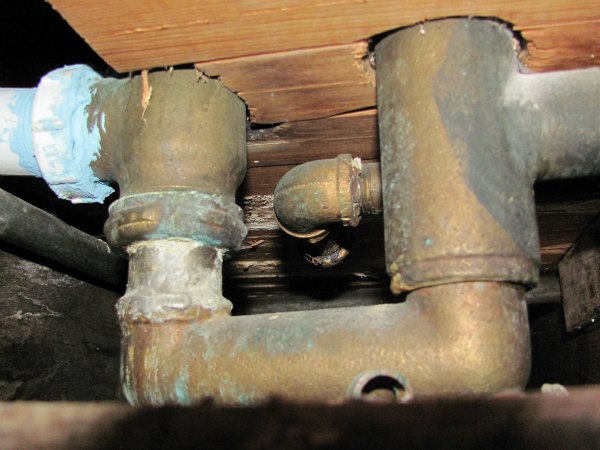There is a charm to older homes that more recently erected houses lack. Some owners like the decorative scrollwork while others treasure substantial flooring made from oak. Some of these edifices even sport stained-glass windows. Often, these houses sit on spacious parcels with impressive landscaping. Still, from a functional standpoint, older homes offer challenges. Even newer dwellings need maintenance and occasional restoration. Hidden behind the walls is a crucial component that requires replacement from time to time. Household plumbing that goes unattended will be a source of trouble–even disaster. So, just what are the tell-tale signs of worn out plumbing?
Discolored Water
Brown or darkened water indicates a problem with the pipes. True, those who live in remote areas–or have a private well as a water source–might suffer this problem for different reasons. Most, however, can credit this issue to corrosion that produces rusty water. If ignored, this condition will evolve into mineral deposits clogging the pipes. Pressure then builds gradually and ends in burst pipes and even flooding. In fact, it might not take long to go from discoloration to deluge. Addressing this possibility sooner rather than later can help avoid water damage and costly clean up.

Unstable Materials
Pipes may need replacement if they are approaching–or have surpassed–the natural lifespan of their constituent materials. For example, PVC (polyvinyl chloride) piping lasts intact for 25 to 40 years whereas copper can go for nearly 80 years. Steel, brass and iron have a shelf life of almost a century. If possible, homeowners do well to know the date of installation. While replacement may not be necessary, a maintenance schedule with experienced plumbers can aid in extending the life of your pipes. One qualification: pipes made from lead are prone to toxicity. Replace them without further delay.
Weak Water Pressure
Low water pressure might point to a clog. Before imagining the worst, you should resort to a commercial drain cleaner to flush out any obstruction. If however–between you and your plumber–there is no detectable blockage, the possibility remains that your pipes may be spouting small pinhole leaks. This means water is getting into the woodwork of the house, giving rise to mold and polluting the indoor atmosphere. Such a state is unhealthy for those living in the house. If the plumber determines these leaks to be widespread, replacing the pipes is a well-advised remedial measure.
Irregular Exposed Pipes
Older houses, especially, will have some of their plumbing exposed. Frequently, these pipes are found in as basement. Fortunately, they can warn you if the plumbing needs replacement. If they are discolored or flaking, they may have outlived their usefulness. If they are wet or pools of water sit beneath them, you can assume their sealing is inadequate — they might need adjusting. Or new pipes might be required.
Most importantly, the homeowner must be the first one to evaluate the plumbing. After that, an expert plumber can confirm or deny the need to replace old pipes.
Charlie Teschner started MESA Plumbing, Heating, and Cooling in 1982. Charlie has a journeyman and master plumber’s license. He was raised with a strong work ethic and he now applies those values to tasks such as Longmont, CO heating repair.




